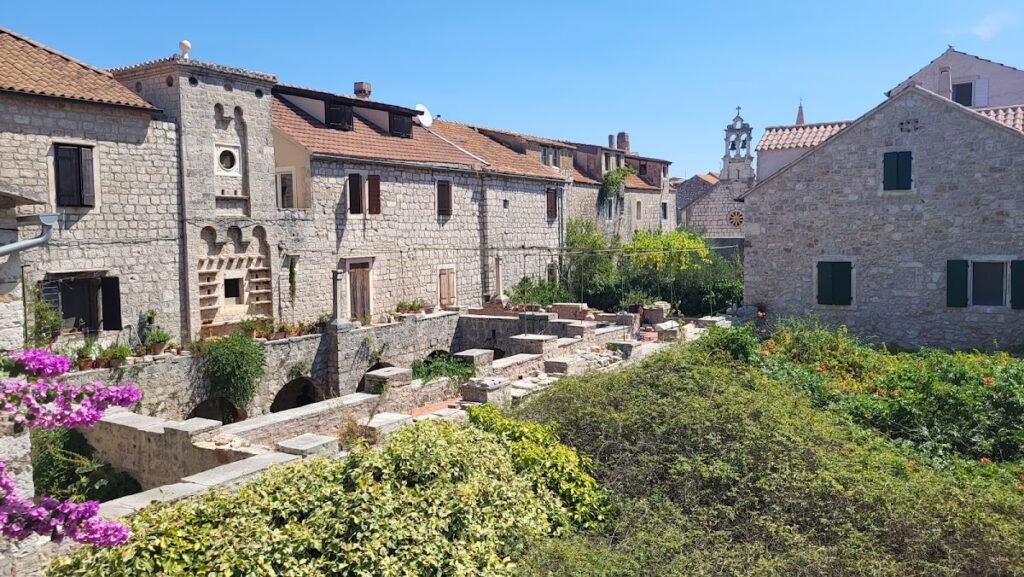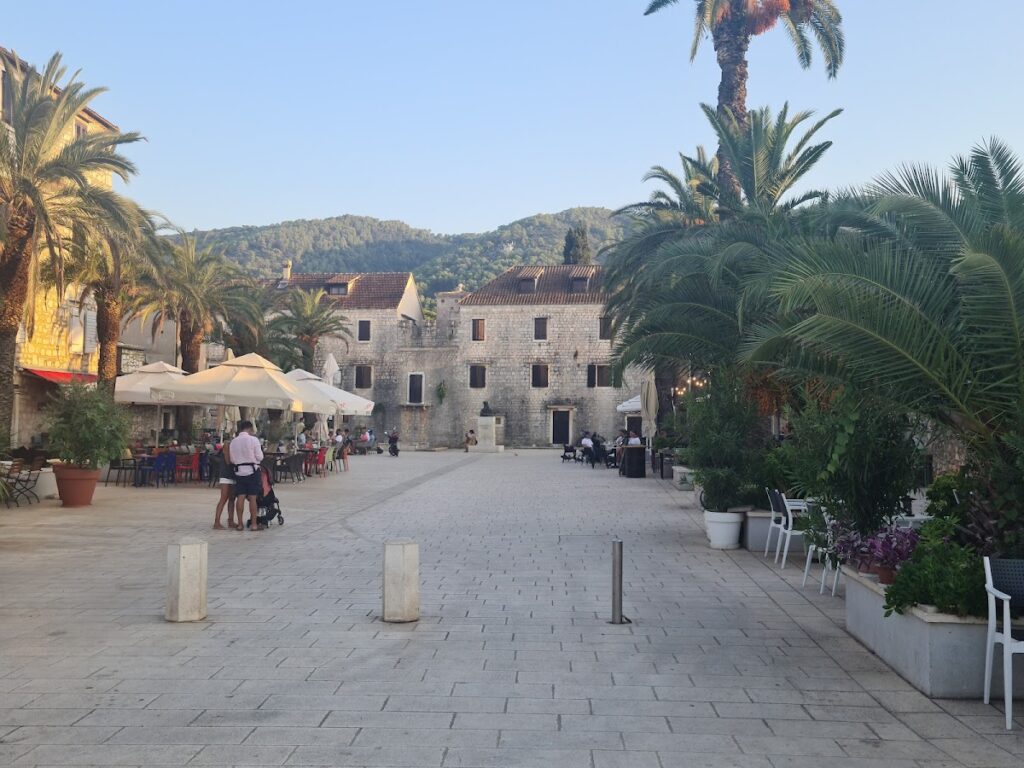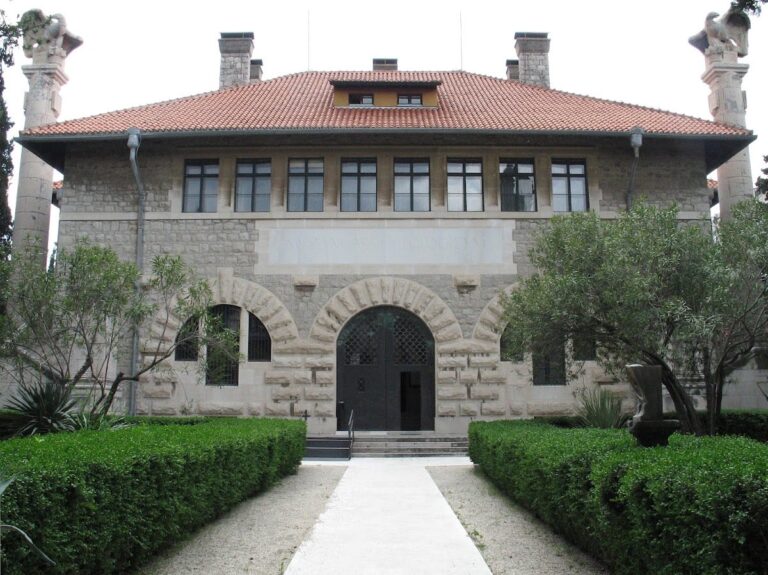Tvrdalj Castle: A Historic Fortified Residence on Hvar Island, Croatia
Visitor Information
Google Rating: 4.6
Popularity: Medium
Google Maps: View on Google Maps
Official Website: www.visit-stari-grad.com
Country: Croatia
Civilization: Unclassified
Remains: Military
History
Tvrdalj Castle is situated in the town of Stari Grad on the Croatian island of Hvar. The site was originally occupied by an ancient Roman villa, establishing its early significance before the medieval era.
The earliest known association with the property dates back to 1448, when a member of the Hektorović family, Hektor Hektorović, received official permission from the governor of Hvar to construct a building on the land referred to as Tvrdalj. This suggests a fortified structure already existed at the location, hinting at its strategic importance during the late medieval period.
In the 16th century, Petar Hektorović (1487–1572), a nobleman and poet, inherited Tvrdalj Castle. He transformed it into a combined summer residence and fortified refuge in response to increasing Ottoman naval raids that threatened Hvar. Petar personally oversaw the design of the complex, blending defensive measures with comfortable living spaces. His detailed will included instructions for the continued completion and maintenance of the estate, reflecting his commitment to its preservation amidst the turbulent times.
Throughout the mid-16th century, the castle suffered damage during Turkish attacks, notably in 1539 and again in 1571 when it was set on fire. Following Petar Hektorović’s death in 1572, responsibility for the property passed to his relatives who undertook repairs and renovations over time. In the 19th century, after the Venetian legal protections that had once safeguarded the area ended, significant structural alterations were made, including the removal of the castle’s southern wall and the addition of upper floors.
Archaeological discoveries, such as a Roman mosaic found near the castle in 1898, confirm the long history of occupation at the site. The design and inscriptions found at Tvrdalj reflect a blend of Renaissance humanism and Christian symbolism, influenced by classical and medieval literary works. The castle stands as a reflection of cultural ideas drawn from sources like Varro’s agricultural writings (*De re rustica*) and the poetry of Dante.
During the 20th century, further modifications took place, including the demolition of the eastern wall and the construction of new buildings above vaulted areas and former cisterns, marking continued adaptation of the site over centuries.
Remains
Tvrdalj Castle is arranged around a central rectangular courtyard, which serves as the heart of the complex. Dominating this courtyard is a fish pond carefully engineered to mix both fresh and seawater, creating an environment suitable for breeding golden mullet (Liza aurata). Surrounding the pond, an arcaded terrace with vaulted ceilings provides covered walkways, lending a Renaissance architectural grace to the practical layout. Positioned above the pond is a tower containing a dovecote, designed for housing pigeons or doves that carry symbolic Christian meaning.
The castle’s residential areas are arranged around the courtyard, including living quarters for Petar Hektorović himself, as well as spaces designated for servants and for travelers or poor individuals needing shelter. On the eastern side, a separate entrance provides access to the complex, near which a small cell beneath the loggia terrace was once inhabited by a Beguine nun, indicating the presence of religious devotion within the site’s community.
Enclosing the entire complex are high defensive walls featuring fortification elements such as a ravelin—a triangular outwork designed to protect the main walls—and a rooftop loggia, known as an altana, equipped with battlements for defense. The main entrance to the castle faces the sea and is marked by a Baroque-style portal engraved with the Latin phrase “OMNIUM CONDITORI” (“To the Creator of the World”). This portal once welcomed visitors arriving by boat, as the bay historically extended right up to the villa’s doorstep.
Within the entrance atrium, a stone niche served as a lavatory and bears an inscription in Latin, “SI TE NOSTI CUR SUPERBIS,” which translates to “Know what thou art, then why art thou proud?” This moralizing message reflects the humanist ideals embedded throughout the site. The exterior walls of the castle are notably simple and austere, lacking the ornamental sculptures common in aristocratic dwellings of the era, emphasizing its primary function as a fortified refuge rather than a purely decorative residence.
Among the castle’s walls, numerous inscriptions are carved in Latin, Croatian, and Italian, many promoting moralistic or humanist themes. Notably, the Croatian texts found here are some of the oldest preserved in the region, underscoring the cultural significance of the site.
South of the main building lies an extensive walled garden, dedicated to the cultivation of herbs, medicinal plants, flowers, and various trees. Domestic animals were also kept within this enclosed area. Both the garden and the fish pond carry Christian symbolic associations: the fish representing Christ and the doves symbolizing the Holy Spirit, intertwining spiritual meaning with everyday life.
In the 19th century, modifications included the removal of the garden’s southern wall, the addition of vaulted ceilings around the fish pond, and the construction of a second floor flanking the central tower. The bay that once reached the villa was filled in during this period, altering the site’s relationship with the sea. Further changes occurred in 1901 when the eastern wall of the ravelin was demolished and new two-story houses were built over the vaulted areas and former cisterns near the entrance, reflecting ongoing transformation of Tvrdalj’s structure through time.










